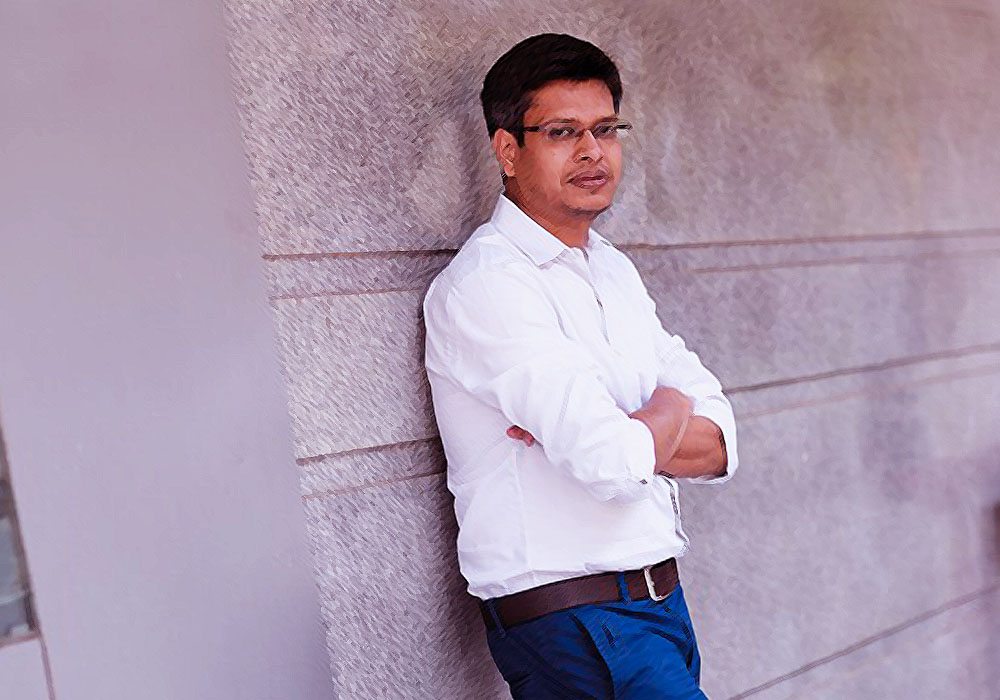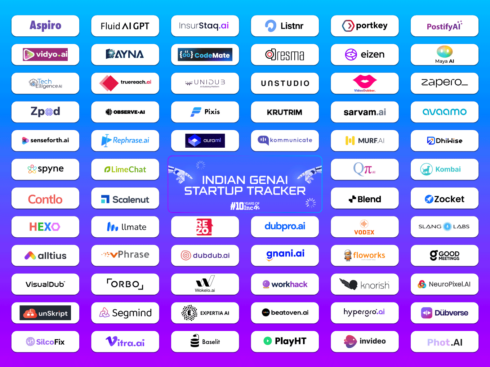Diwali 2011.
On a day when nearly the entire country is off celebrating, in a room smaller than 10 feet by 10 feet, in the second basement of an industrial building in Vile Parle, Mumbai, CitrusPay founder Jitendra Gupta, along with his 10 member team sat transfixed, waiting for their first client to go live on the platform. The client was an ecommerce website called Skoolshop.com, founded by an ex-ICICI Ventures friend of Jitendra’s.
Jitendra had convinced him to try CitrusPay, the online payment gateway he had launched a few months back (April 2011) after quitting his cushy job at ICICI. That night was a big night for them as his friend’s site would go live and finally, the first transaction would hit CitrusPay’s system. It would be a litmus test of the last seven-eight months of hard work and of Jitendra’s conviction in his idea.
Diwali celebrations would have to wait.
The team waited patiently for Skoolshop.com to go live. It was a three-hour wait before the first attempt materialised. A transaction hit the platform, but it failed.
“You know, the usual stuff that happens in payments,” quips Jitendra, of that moment.
So the team waited, for another couple of hours before they saw a successful transaction on the screen. And that single successful transaction changed everything.
Says Jitendra, “I still remember that day – it changed our thinking, our life, our ambitions completely.”
Of course, even Jitendra, did not know at that time that five years later, interestingly, just in time for the festival of Diwali, their lives would completely change again with the $130 Mn bonanza their rival PayU Global, the digital payments provider owned by South Africa’s Naspers Group, would dish for a buyout.
A buyout that will make it by far the biggest M&A cash deal in Indian fintech space.
But then, this result is actually quite in sync with Jitendra’s big ambitions who, from the very beginning, had always aspired of making Citrus the largest fintech player in the country.
There Was A Strong Need To Create A Consumer Brand For Payments In India, Which Was Non-existent in 2010-2011.
Before starting Citrus, Jitendra was working with ICICI bank. He had worked at the bank for nearly eight years, with his last assignment being driving the payments strategy for the bank, both online and offline.
In the very first stage of the assignment, he was instrumental in executing a joint venture, an experience which was a big learning and opened up a whole new space for him in terms of thinking. Says Jitendra, “I realised that there is a huge difference between what merchants were expecting and what banks were offering when it comes to payments acceptance, checkout ease, etc. This is where I looked at the global player PayPal, which was my ideal role model back then. PayPal was known for its superior customer checkout experience, and was looked upon as a reliable payment option in the US and Europe markets. It’s then I felt that there was a strong need to create a consumer brand for payments in India which was not existent in 2010-2011.”
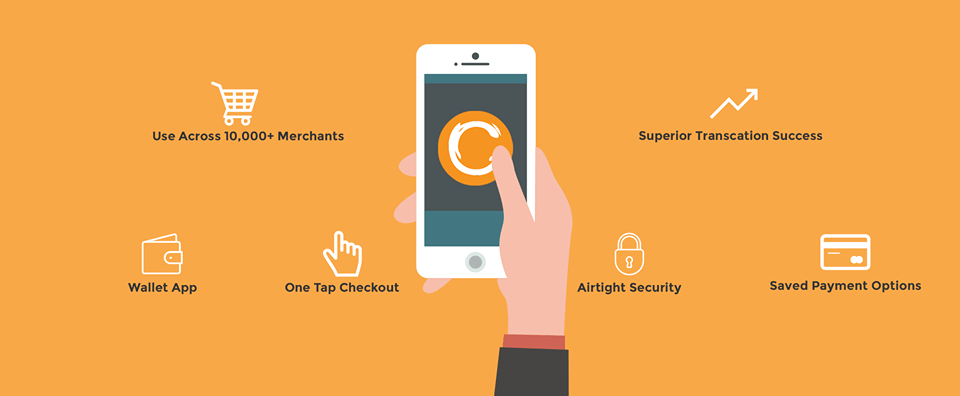
This realisation, coupled with the boredom that had set in after living the “corporate life” for eight years, drove him to quit the bank. This was followed by an eight-month break, where Jitendra reflected what he should do next. Not surprisingly, he realised that payments were what excited him the most.
And, thus, CitrusPay was launched in 2011. The idea was simple – to solve merchant acceptance issues like faster on boarding, and providing reliable infrastructure and analytics services. On the consumer side, it aimed to provide a faster experience of payments online as well as a unified checkout experience on the lines of PayPal as Jitendra was heavily influenced by PayPal.
It Can Only Go One Way - Which Is Northwards, It Cannot Go Southwards, And It Cannot Go Flat.
Despite Jitendra’s sound experienced and grand ambitions, the feedback he received was hardly magnanimous. Something that became a challenge, and raised quite a few doubts in him. Says Jitendra,
The most difficult part was the feedback I got from my peers, friends, and industry guys, who believed that since payments is a commodity business which is highly dominated by banks, there is no scope for new players. So why am I getting into it?
Though doubted by many, Jitendra stuck to his conviction. And there was a logical reason behind it. He explains, “My thesis was simple. When I look at the digital transaction market, the opportunity is so large. In 2011, Internet penetration was low, the payment volume was very low as was the overall digital transaction space, so I reflected that it can only go one way – which is northwards, it cannot go southwards, and it cannot go flat. So I said the matters of fact are so positive (sic), and it made sense and that was my argument.”
Of course, in hindsight, it all worked out.
But back then, keeping his own conviction despite the not-so-encouraging feedback, was the first challenge he had to face in order to keep going.
Then again, building the platform was another ball game altogether. Being a commerce guy, Jitendra had no idea about technology and it was his blind spot. So initially he worked with a with a third party vendor who had some experience on the payments side. The vendor helped him build the initial platform, which survived for almost a year. But in the six-seven months after starting up, he realised that this would not suffice.
He explains, “In this kind of business, when you have high ambitions, you want to grow faster, you want to be more agile in your development techniques. We had this realisation six-seven months after starting up. So then we started building our own in-house team. So we hired a professional CTO, we hired teams below him, and this is how we started building the site.”
I Made Almost 60 Visits To Airtel Office, Literally 60 Visits.
Citrus went from the first customer to 50 customers within two months. Jitendra personally used to drive product and sales, work with the technology team, acquire vendors, and even did office boy chores! Hard pressed for time, he would end up working 15-16 hours a day. By May 2012, the startup had started gaining momentum, doing a monthly volume of $150K (INR1 Cr) per month. This number now stands at $165Mn (INR1,100 Cr) per month.
Meanwhile, by September 2012, the monthly transaction volume had hit $601K (INR4 Cr). But it was not enough because even with these numbers, the company’s revenues would amount to somewhere around $7.5K (INR5 Lakhs). This made him wonder if the model was scalable, what was going right and what were they missing. Despite all the hard work, doubts still arose in Jitendra’s head whether, in fact, the business itself was sustainable.
But he decided to keep on trying and not give up. He says, “We were getting reasonable success but the scale still eluded us. The things that I had been warned of in the beginning by industry players, that there’s no space for new players in this sector, kept crossing my mind. So I wondered if they were right or was I insane! So these thoughts were going on always in my mind.”
But by December 2012, the startup hit a decent sales run rate. All because of two major customers who turned things around for Citrus that year.
The first one was ticketnew.com which is the Bookmyshow equivalent for single screen theatres in the South. Citrus was able to get ticketnow.com on-board in July 2012 and it remains one of their biggest clients today, as well.
Coming On Fast Track
And then in November 2012, Redbus happened. After that Citrus never looked back!
But landing these two accounts was nothing short of a test of perseverance for Jitendra. It took more than 20-25 meetings to convince them and to get them confident about the platform – will deliver better services than existing players such as CCAvenue, Atom Technologies, Timesofmoney, among others.
Jitendra would personally go for all these meetings. He recounts, “It was total sales perseverance which prevailed over sanity. They were using the usual competition. Each time we went with a different feature hoping it would excite them, a better looking checkout page, more promises, showed them more love, and this sort of worked in our favour.”
But, it was in 2013 that Citrus literally hit the jackpot. Because that was the year in which it acquired its first super-large customer – Airtel!
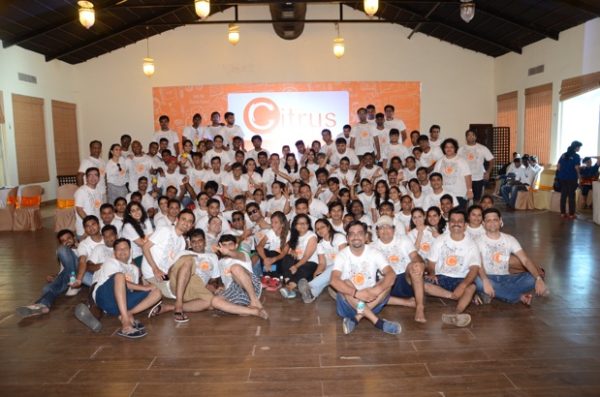
Airtel came on board in July 2013 and that was a game-changing moment for Citrus, as it completely changed their outlook towards scale. Airtel, as a customer, was doing 50-60K transactions a day at that point, while Citrus was still doing only 4-5K transactions. So suddenly their scale went up 10 times, everything they had to think about, increased by 10 times. Hence, they had to build teams accordingly and figure out the service delivery.
But from that day on, Citrus never faced any issues of scale.
Recounts Jitendra, “I made almost 60 visits to the Airtel office, literally 60 visits, to convince them about our technology; giving them confidence about our transaction processing ability; giving them confidence about our team skill set. Around 60 visits to convince almost each tech guy of Airtel, each product guy of Airtel, each business or customer service guy of Airtel. So, again it was a huge perseverance job.”
But, of course, this perseverance paid them back manifold. Once a large client such as Airtel was on board, other large clients kept flowing in.
In tandem with the client list, the Citrus team also expanded with time. From April 2011 till December 2012, it had 20 people; in 2013 the number went up to 40; in 2014 it reached 60; in 2015 it swelled to 200; and in the current year, it now stands at 300.
The rationale was simple. The teams were grown aggressively in 2015-16 consciously so that they could handle 10X the current business. Jitendra adds that one big realisation in the growth phase was that they were always building teams to meet the requirement for that time. But in 2015, they realised that they had to build teams for what was coming two years later.
Of course, this journey of highs was marked with quite a few lows as well. Every time the team lost a sale despite all efforts was a low point. And one such blow was losing the Uber’s India account. Says Jitendra,
When you are in a journey in which you want to win and win badly, each time you lose is a low point. We had our fair share of low points where we could not win few accounts which we wanted. One of them was Uber. In 2015, we were pitching for business for Uber, and we could not gain that account. That could have been a game changing account for us, and that was a real loss for us. I still feel regret for it.
But then there were other wins that made up for it.
In The Payment Space, There Are So Many Things Happening Around You That It’s Very Easy To Get Distracted.
As the payment space evolved over time, CitrusPay kept its focus on the path of improving checkout experience, of improving merchant services, without bothering much about what’s happening around them or which startup is doing what to disturb the ecosystem.
Says Jitendra, “One of our learnings in the payment space, is that there are so many things happening around you that it’s very easy to get distracted. We actually kept our focus and did not get distracted. We, of course, kept a watch if anything game changing is happening that can create a threat to our business. And I don’t think anything of that sort was happening amongst our competitors.”
It is this focus that brought Sequoia as an investor board early on in their journey in August 2011. Jitendra was introduced to Sequoia by a common friend and as Sequoia loves all things payments, they invested $1.8 Mn in their first venture round.
Says Jitendra, “The investment came at a time when I had no office, no technology, no team member and I was working from home.”
Of course, thereafter, more funds came in with a $5.5 Mn Series B funding in 2013, and a $25 Mn Series C in 2015, which saw Sequoia being joined by a new investor Ascent Capital, with participation from existing investors — eContext Asia and Beenos Asia.
The startup now processes more than $2.3 Bn volume of worth annually, has about 20 Mn customers, and 11,000 merchants on-board. From airlines such as GoAir, Indigo, Jet Airways, Etihad, Emirates to etailers like Shopclues, Myntra, Amazon, Pepperfry, Zivame, the list of merchants has grown steadily.
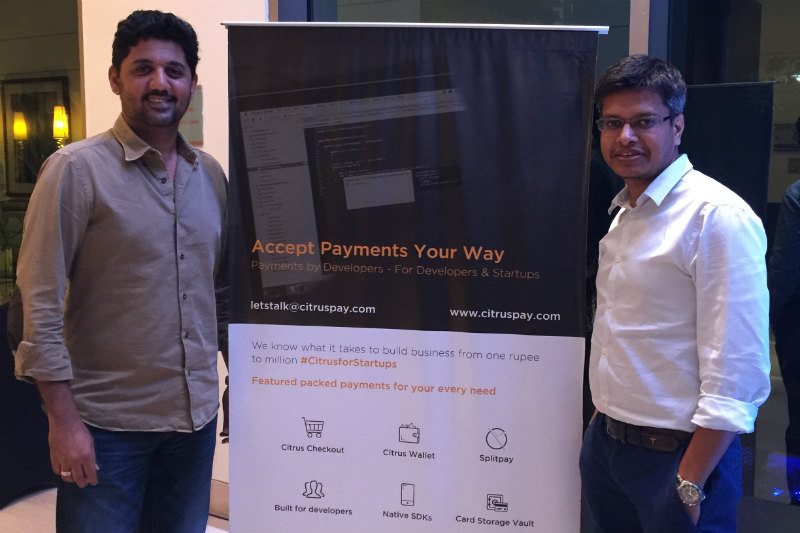
Launching Citrus Cube, Sellfie And More
Along with this growth, also rose the question of whether shifting the focus to consumer payments business made sense. In this direction, in February 2015, it launched an intuitive and user-centric mobile app ‘Citrus Cube’ which lets the user manage and plan personal payment and bills even while working offline. But the team realised that merchant payments were its forte and hence in December 2015, the consumer business was spun off as a separate entity, with co-founder, Satyen Kothari, leaving to head the new startup.
Explains Jitendra, “Cube’s business model was very different from Citrus’ objective. Our business model was to become the largest payment company in India and the Cube business model was more consumer focussed and personal financial management. These were not aligned at all. The burn rate there was very high, which we were not comfortable with, considering the plans for the payment business. So this is where we took a conscious call. Fortunately, everyone understood the rationale including Satyen who parted ways with us. So it worked out pretty well for us.”
It is the same conscious choice which Citrus has made when it chose to focus more on the entire payment system rather than wallets alone. Jitendra explains, “It’s a public perception that people are using wallets as mainstream. We do accept all wallets, if you look at the wallet share in the whole payment ecosystem, they are around 1%. So do you focus on the 1% market or on the 100% market opportunity? That was a choice we had to make last year.
“So we made the choice the other way – we will focus on 100% of the market and we will give an option to the consumer to choose which payment option they want to use rather than influencing their choice.”
In the same spirit, increasing its reach towards contextual commerce and social payments, it launched the contextual commerce platform, Sellfie this June. Sellfie will enable individuals and small businesses to sell and collect payments on social networks and instant messengers using buy buttons, payment links and chat bots. Interestingly, Sellfie has been independently developed by Anish Achuthan, co-founder of Zwitch, the Bangalore-based payment platform it acquired last year for an undisclosed amount. With Zwitch’s acquisition, team was what Citrus was really gunning for.
Says Jitendra, “Zwitch was an acqui-hire and the only rationale behind it was the team. We did not get any business, we did not get any technology, we just wanted to get the team in-house because we really like the team, especially Anish who was heading the team.”
It can be safely concluded that with the launch of Sellfie, that too without any guidance from their side, Jitendra and Amrish Rau’s (MD CitrusPay) bet on Zwitch seems to be paying off.
From Day One, Clearly Our Intention Was Right - If The Company Succeeds, Everyone Should Celebrate The Success.
After raising its Series C last year, CitrusPay had big plans this year to launch its credit product Lazypay and Sellfie and push them out in the market. So in order to fuel themselves much in advance, they went out in the market for funds and started meeting financial investors almost six months before.
The responses they got were encouraging. And one of the respondents happened to be PayU Global, the digital payments provider owned by South Africa’s Naspers Group. PayU India was a strong competitor to Citrus in India. So of course, when they evinced interest, the Citrus team was a bit concerned.
“It happened by chance,” says Jitendra, on the merger.
Says Jitendra, “Of course when they met us the first time, we wondered why these guys are meeting us. We were concerned whether the objective was to take information from us about our business.”
But Jitendra’s doubts were relieved by PayU Global’s leadership team which gave the Citrus team huge comfort about their vision and long-term plans. While discussions started on an investment note, the more the two teams discussed and engaged, they found a stark similarity in their vision about building the largest fintech company in India.
Explains Jitendra, “Both the teams were so passionate about doing it, that we questioned why sub-optimise the outcome? Why not get together and do a bigger thing, at a bigger platform, at a bigger scale with a more razor-sharp focus? So that we don’t give a chance to anyone to come and compete with us. And I must give full credit to the Naspers team of assuring us of how they were thinking through the combined entity. They did their job so professionally that we never felt any discomfort after the first couple of meetings.”
But of course, true to their nature, it took more than 100 meetings for the CitrusPay team to finally decide in favour of the merger!
Says Jitendra, “It took around 6 months. Before Naspers, we got a couple of financial investment term sheets as well. And those were equally or more attractive, I would say. But we got aligned with the Naspers team because of their vision and because of the long-term thinking they have with respect to the Indian market.”
The rest, as they say, is history. And one of the biggest mergers in India’s fintech space followed, with about 50 employees set to share in the success with an estimated INR 43 Cr. being allocated as returns on the employee stock option plan (ESOP), and Sequoia Capital expected to earn a four-fold return on its investment. Other investors like Ascent Capital, Japan’s Beenos and eContext Asia have also earned bountiful returns, thus putting the transaction in the limelight as a successful exit.
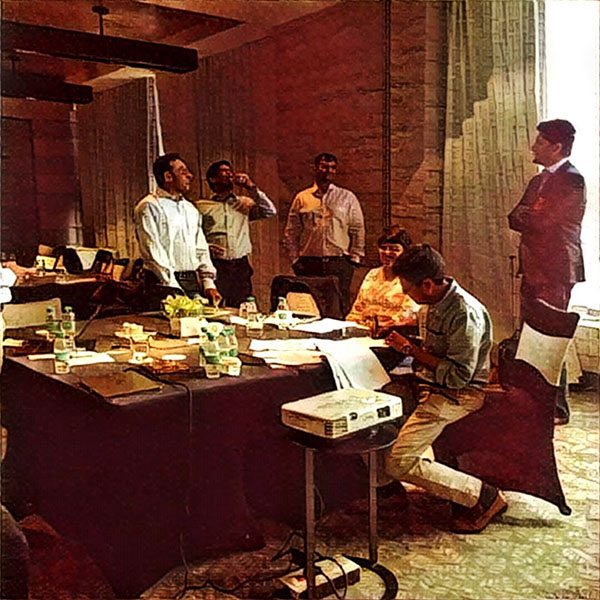
But Jitendra begs to differ. He says, “Though the media is highlighting it as an exit, personally I am not seeing this as an exit. I am seeing this as a partnership with Naspers to build a company for future and build the largest fintech company in India.”
Be it an exit or a partnership, one thing is for sure – the founders’ intention of making the company’s success everyone’s success has been handsomely validated. About 15 employees are set to rake in over $150K(INR 1 Cr), with an office boy who was one of the first employees at the company taking home $75K(INR 50 Lakhs)! And Jitendra is one happy founder at the moment.
He says, “From day one, clearly our intention was right. Our intention was if the company succeeds, everyone should enjoy, everyone should celebrate the success. So we were very generous in giving stock options to people who joined early, at the same time we made the stock option grant wider so that more and more people gain out of the rewards which the company gets when it succeeds.”
The startup has had a constant ESOPs policy since the beginning – people who have joined at a senior leadership level or have spent a year within the company, are entitled to stock options. Of course, no one ever anticipated that the spoils would be so large!
He adds, “So clearly we did not anticipate in the start that the reward size would be so huge for the employees nor did they, but it’s their effort which got the company to this level, so I think they deserved it, they earned it for themselves. I don’t think we did any favour to them.”
And sure they have. So much so the founders bountifully arranged a party for all the 290 employees at Phuket, even tweeting to Sushma Swaraj for helping out to expedite the passport process for some employees going on their first international trip!
@SushmaSwaraj few of our #startup employees without passport. 7 days for the Phuket travel. Any help appreciated ? https://t.co/OBwYVWmyzl
— Amrish Rau (@amrishrau) September 16, 2016
Team did a party like there is no tomorrow! @amrishrau @CitrusPay @Sequoia_India @EconomicTimes pic.twitter.com/o3CGrPEYkc
— Jitendra Gupta (@guptajiten) September 27, 2016
And when asked how Sequoia who have made a handsome exit too, reacted, to the acquisition, Jitendra admits, “They were not convinced and if you ask them today they are still not convinced. They feel that payments is the next big opportunity in India. They take big bets on payments and have invested in successful payments companies (PayPal, Klarna, Alipay). But when we shared our vision that how it requires more and more capital which Naspers can support and how Naspers shares the same vision, they agreed.”
He adds that he gives credit to Sequoia that they go by what founders are actually convinced of, rather than getting into conflicting situations. And this is where they gave their big support to the Citrus team which was highly convinced by Naspers’ vision and their ability to take Citrus to the next level.
So, ultimately Sequoia respected that decision. A decision that will hopefully make Citrus the largest company in the online payments space. And Jitendra is confident that it’s a given, there are no two ways about it.
He says, “We actually have become the largest by combining both the businesses. Our focus is to create the largest fintech company through our play in credit, through our play in P2P payments, through our play in SMB credits, and POS devices. We are going to have a bigger play in the financial ecosystem now.”
So while Amrish will become the CEO of PayU in India and will lead the entrepreneurial management team across PayU and Citrus Pay, Jitendra will drive PayU’s fintech foray into credit through Citrus Pay’s offering Lazypay. This product basically separates out the purchase and the payment experience. One can literally underwrite the purchase by giving credit to the consumer and take away the anxiety of payment drop, which is a big concern with mobile payments.
So effectively, users can shop on mobile without paying and the platform would aggregate their purchases for a fortnight. One can then pay in a single go whenever one is connected with WiFi or through your desktop or at home, without having the anxiety of not completing payment.
He further adds, “I feel post-acquisition, our plans are going to get accelerated. The reason I feel this is, now we have the power of two companies. Earlier 50% of my time along with Amrish, was spent in fundraising. Now we can invest that time back into the business. So definitely, when we were investing more time in our business, our chances of success are more.”
The Line Will Get Blurred Between Whether We Are A Consumer-centric Company Or A Merchant-centric Company.
While the transition plan post the merger is still a work-in-progress, how Jitendra sees it going forward is that it is going to get the best of both platforms – best of the features, functionalities, and what merchants like. Though he did say it’s too early to comment if it will be one combined platform, one thing he was sure of was that the acquisition does not affect the team as each team member has a significant role to play in the combined structure.
In the next five years, merchants will still be the number one priority for the combined entity, and their main revenue source. But consumers will also become an important part. Says Jitendra, “Ultimately, consumers are the ones who have to accept your offering, have to like your experience, have to use you more often, or avail credit for a transaction. As I see it, going forward, the line will get blurred between whether we are a consumer-centric company only or a merchant-centric company.”
And there are no doubts about it, given the fact that in payments scale will be the big thing.
But he adds that in payments, going forward, payments play simply won’t be payments play but data play. Payment transactions give one a lot of data and how startups leverage the data to improve the consumer checkout experience; to enable payments on social channels; to provide SMB credit; those are the game-changing opportunities in the ecosystem.
Meanwhile, the upcoming payments banks will also do their bit in adding to this scale. As per Jitendra, in line with the RBI’s objective, the payments banks will increase financial inclusion, focussing on the unbanked population which is another 400 Mn – 500 Mn. And once this segment gets formal access to banking channels and gets used to it, they are going to get driven towards the experience which urban consumers are used to, which is where CitrusPay and other payments players come into the picture.
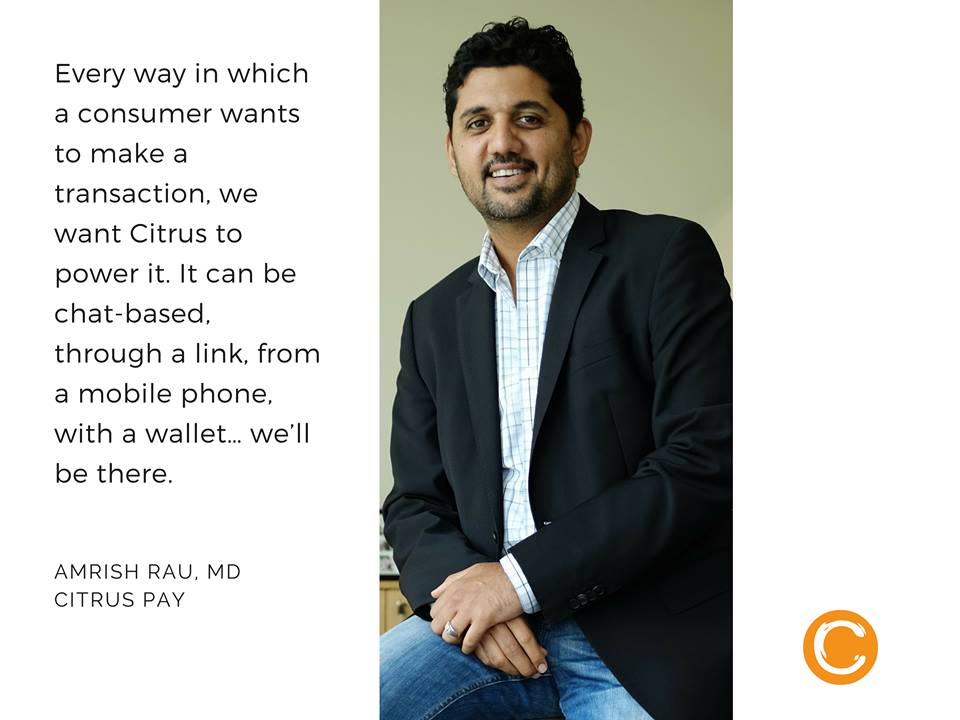
However, for all of India to go cashless, he estimates it’s still going to another 20 years or so. He does add, “But five years down the line, 20% of the transactions might be cashless, there’s a strong possibility of that. So today if only 3% transactions are cashless that means today’s market multiplied by six-seven times will be the opportunity five years later. So, clearly, it’s a huge market we are playing in.”
For Jitendra, this is just another validation of the belief he had six years before when he had quit his banking job to start his entrepreneurial journey. While he gives credit to ICICI’s entrepreneurial culture for his success, as for right from the beginning he was given full authority to take calls on significant matters, but at the same time, eight years at the bank, and he knew he was getting too comfortable.
He adds, “Clearly that experience was one of the big input variables. And the second was my DNA. I am Marwari by the community. So of course, as a Marwari, you always have an aspiration to start your own business. So, literally, I must have thought of 50-odd ideas since 2006 before hinging on to Citrus, but the courage to leave ICICI was spur of the moment. It was not planned. I was 29 and I did not want to be so comfortable in my life. This was the time when I wanted to work harder and I don’t think I was ready to do that in the bank after getting too comfortable. So I thought let me just start. And one fine day I came home and said I am quitting.”
Fast forward six years and a $130 Mn acquisition tag, and Jitendra might almost look comfortable with where he has taken CitrusPay to. But the vision to become the biggest fintech player in India might not let that comfort last for long. It is just the kind of fuel his restless yet persistent entrepreneurial spirit seeks after CitrusPay’s recent success.
Another 20% of transactions will go online in the next five years and approximately 500 Mn people will get access to banking and payments in the near future. It won’t be wrong to say that the game has just begun and Jitendra might not find much time to be comfortable, after all.



